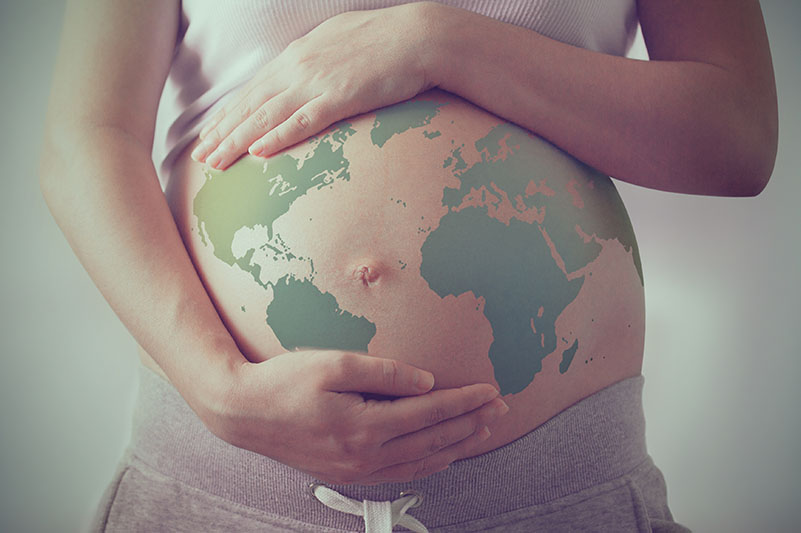The Families First Coronavirus Response Act (H.R. 6201, hereinafter “the Act”), signed into law Thursday by the President, provides two new, important worker protections related to the COVID-19 pandemic. Both go into effect April 2, 2020 (fifteen days after enactment) and expire December 31, 2020.
1. “Emergency Family and Medical Leave Expansion Act,” §§ 3101-06 of the Act
The Act adds new temporary sections to the Family and Medical Leave Act (“FMLA”), 29 U.S.C. §§ 2612(a)(1)(F) and 2620, specifically for Covid-19.
Employers with fewer than 500 workers must give eligible employees up to 12 weeks of job-protected FMLA leave under the newly-added 29 U.S.C. § 2612(a)(1)(F) for a “qualifying need related to a public health emergency.” “Qualifying need” means where an “employee is unable to work (or telework) due to a need for leave to care for the son or daughter under 18 years of age of such employee if the school or place of care has been closed, or the child care provider of such son or daughter is unavailable, due to a public health emergency” (id. § 2620(a)(2)(A)). “Public health emergency” is defined as “emergency with respect to COVID-19 declared by a Federal, State, or local authority” (id. § 2620(a)(2)(B)). (“School” and “child care provider” are defined at § 2620(a)(2)(C) and (D).)
“Employee” under FMLA is defined, for the limited purpose of this section, as one “having been employed for at least 30 calendar days by the employer” (id. § 2620(a)(1)(A)), instead of the 12 months/1,250 hours of service that is ordinarily required. “An employer of an employee who is a health care provider or an emergency responder may elect to exclude such employee from the application of the provisions in the amendments made under of section 3102 of this Act” (section 3105 of the Act).
Interestingly, the 50-employee minimum ordinarily in effect under FMLA is lifted (id. § 2620(a)(1)(B)), so the expansion applies to even the smallest employers, though the Department of Labor is authorized to issue regulations “to exempt small businesses with fewer than 50 employees from the requirements of [29 U.S.C. § 2612(a)(1)(F)] when the imposition of such requirements would jeopardize the viability of the business as a going concern.” Moreover, employers with fewer than 25 employees have relaxed requirements for restoring employees to work following leave under 29 U.S.C § 2614 (id. § 2620(d)). Despite extending the requirements of the FMLA to employers of under 50, though, there is no private right of action for violations by these smaller employers … although the Secretary of Labor has the power to bring an administrative or civil action against them for enforcement (section 3104 of the Act).
The first two weeks of such leave may be unpaid, although an employee at their option may substitute vacation/personal days (id. § 2620(b)(1)(A) and (B)), after which – for the next ten weeks – the employee is to be paid at a rate of no less than two-thirds of the employee’s usual rate of pay, based on a formula set forth in the act (id. § 2620(b)(2)), but capped at $200/day. All other provisions of the FMLA, such as those entitling participants to continued participation in employee benefit plans, apply to persons who take leave under these new sections.
There are specialized provisions for employer signatories to a multiemployer collective bargaining agreement (section 3103 of the Act).
Because the new provision relates to care-for-others, it presumably applies to state agencies (again, of fewer than 500 employees) irrespective of the Eleventh Amendment (Nevada Dept. of Human Resources v. Hibbs, 538 U.S. 721 (2003)).
2. “Emergency Paid Sick Leave Act,” §§ 5101-11 of the Act
Under section 5102 of the sick-leave law, employers with fewer than 500 employees will be required to provide employees with paid sick leave for the following reasons:
“(1) The employee is subject to a Federal, State, or local quarantine or isolation order related to COVID-19.
“(2) The employee has been advised by a health care provider to self-quarantine due to concerns related to COVID-19.
“(3) The employee is experiencing symptoms of COVID-19 and seeking a medical diagnosis.
“(4) The employee is caring for an individual who is subject to an order as described in subparagraph (1) or has been advised as described in paragraph (2).
“(5) The employee is caring for a son or daughter of such employee if the school or place of care of the son or daughter has been closed, or the child care provider of such son or daughter is unavailable, due to COVID-19 precautions.
“(6) The employee is experiencing any other substantially similar condition specified by the Secretary of Health and Human Services in consultation with the Secretary of the Treasury and the Secretary of Labor.” (§ 5102(a).)
The employer must grant the leave immediately, regardless of how long the employee has been employed, and the employer may not condition the leave on using other employer-provided sick-leave first or finding a replacement employee (§ 5102(d) and (e)). Employees are protected against interference from or retaliation for using the sick leave (§ 5104).
Full-time employees may receive up to 80 hours of sick leave, while part-time employees may receive “a number of hours equal to the number of hours that such employee works, on average, over a 2-week period” (§ 5102(b)). Paid sick time may be no lower than the employee’s regular rate of pay or minimum wage, although it may be two-thirds of regular pay if the employee is caring for others (§ 5110(5)(B)). Regardless of the employee’s regular rate of pay, though, the amount of paid sick time is capped at $511/day (if the employee is sick) or $200/day (if they are caring for others) (§ 5110(5)(A)). For part-time employees with variable schedules, there is a formula for calculating paid sick time (§ 5110(5)(C)).
The right to sick leave terminates “beginning with the employee’s next scheduled workshift immediately following the termination of the need for paid sick time” (§ 5102(c)). An employee has no right to be compensated for unused sick-leave time under this act (§ 5107(2)). The time does not roll over to the next year (§ 5102(b)).
Rights under this section are enforced under the Fair Labor Standards Act (FLSA) – denial of leave is treated as a minimum-wage violation – and subject to the same remedies as provided by 29 U.S.C. §§ 216 and 217. These rights are in addition to any rights employees may have to sick leave under local law, a CBA, or any other existing employer policy (§ 5107(1)).
Definitions of “employee,” “employer,” etc. are generally borrowed from the FLSA and FMLA (§ 5110). Employers include state and local governments. As with the FMLA amendment above, “an employer of an employee who is a health care provider or an emergency responder may elect to exclude such employee from the application of this subsection” (§ 5102(a)).

